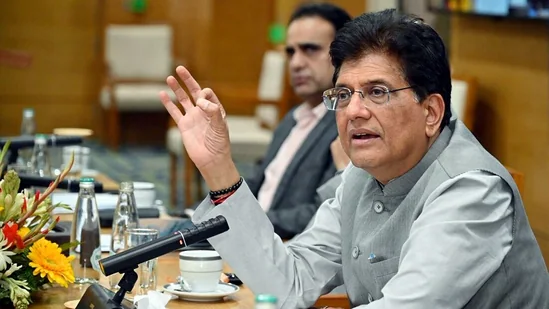After the BJP’s Victory, the Sudden Silence: Why the Noise Vanished Overnight
- MGMMTeam

- 3 days ago
- 4 min read
A Strange Quiet After a Loud Election
India just witnessed one of the most high-voltage election seasons in recent years, yet the moment the BJP-led NDA swept to power, a strange and deliberate quiet descended across major media spaces. Debate panels that were shouting for weeks suddenly appear muted. Outlets that ran daily predictions, allegations and “breaking news” controversies now look like they’ve collectively switched to silent mode. And this silence is not accidental. It reflects a change in narrative control, political stability and the uncomfortable reality that many media houses thrive on chaos—but are far less vocal when the verdict goes decisively against the storylines they were hoping for.

A Mandate So Clear That It Ended the Drama
The NDA’s victory was not narrow enough to spark post-result controversies, nor fractured enough to fuel daily speculation. Bihar gave the alliance a historic mandate. Delhi saw a political shift that ended years of anti-incumbency frustration. A result this clear naturally shuts down the “who will form the government” circus that TV studios love. The people delivered a straightforward message, and that message left no oxygen for alternative narratives. When voters speak this loudly, the political noise-makers lose their material. And the quiet we see now is the price of a decisive verdict.
Media Outlets Go Silent When Their Predictions Fail
One of the reasons behind the muted atmosphere is that several media platforms invested heavily in storylines that did not align with reality.
Before elections, much of the media thrives on speculation—fragmenting coalitions, imaginary infighting, “anti-incumbency waves,” caste-based collapse theories and overhyped “surprises.”
But the BJP’s victory dismantled many of these predictions.
And when predictions fail, newsrooms don’t become louder.
They become quieter.
Instead of introspection, some outlets simply shift to silence. No large-scale analyses of “where their assessments went wrong,” no deep studies of how public sentiment actually shaped results. The quiet indicates discomfort, not objectivity.
Governance Without Drama Leaves Some Channels Jobless
For the BJP, the post-election phase is about governance. It’s about policy decisions, women-focused welfare delivery, economic planning, creating administrative balance and preparing for future development phases.
Governance is serious, steady and unglamorous work.
But for media outlets accustomed to constant political conflict, governance is boring.
The calmer the political landscape, the fewer shouting matches on prime-time debates.
The quieter the ministries, the lesser the scandal-hunting.
The more disciplined the administration, the fewer the political explosions that certain outlets depend on for TRPs.
So the silence we see is partly because the government is working—and not giving media houses the chaos they prefer.
Opposition Disorder Leaves No Daily Storyline
Another reason for the hush is the state of the opposition.
After the results, much of the opposition leadership retreated into closed-door introspection. There were no mass protests, no confrontational press conferences, no aggressive counter-narratives. A fragmented opposition creates no front-page drama.
And without a daily “BJP vs Opposition” spectacle, many media channels simply don’t know what to broadcast.
The absence of resistance is contributing to the absence of headlines.
When Headlines Depend on Conflict, Stability Becomes Boring
The truth is simple:
The media thrives on instability.
Stability, on the other hand, doesn’t sell.
When the BJP wins clearly, governance becomes predictable, and ministries become disciplined, the usual supply of “breaking news” dries up.
Instead of appreciating political calm, some outlets prefer to act as if nothing is happening at all.
This creates the illusion that the country has gone silent—when in reality, only the “conflict-driven media machinery” has gone silent.
A Temporary Lull Before the Next Cycle
This sudden quiet won’t last forever.
As the BJP begins rolling out major schemes, restructuring governance priorities and preparing for upcoming state elections, political temperatures will eventually rise again. Media houses that are silent today will return with new debates tomorrow. But this current phase of calm is important: it proves that Indian politics can be stable, focused and productive without daily theatrics.
The MGMM Outlook
After the BJP’s decisive victory, an unusual and almost strategic silence has taken over mainstream media spaces. For weeks, the same outlets ran predictions, debates and dramatic narratives, but the moment the results became crystal clear, the noise vanished. This quiet isn’t accidental—it reflects the discomfort of media houses whose pre-election theories were dismantled overnight. The landslide mandate in places like Bihar and the political shift in Delhi left no room for speculation or “hung drama.” With voters delivering an unmistakable verdict, the usual conflict-driven media machinery suddenly found itself without material, and instead of acknowledging their misjudgments, many outlets simply slipped into silence.
At the same time, the BJP’s post-election approach—focused on governance, welfare delivery and administrative discipline—offers little chaos for TRP-driven newsrooms. A stable government and a disorganized opposition mean no daily clashes, no press-conference theatrics and no convenient controversies. When headlines depend on conflict, a calm political environment becomes “boring” for certain channels. The quiet we see today isn’t national calm—it is the result of media houses losing both their storylines and their shock-value narratives. This silence exposes how dependent the coverage has become on instability, and how uncomfortable some platforms are when the public verdict goes against their expectations.
(Sources: The Economic Times, Livemint, India Today, Times of India)




Comments